- Home
- Michael Crichton
The Andromeda Evolution Page 11
The Andromeda Evolution Read online
Page 11
Looking at each of her team members, Vedala found herself thankful. The strict, mechanical precision of Peng Wu and the calm competence of Harold Odhiambo were comforting. It was James Stone, the robotics expert and last-minute addition to the team, who worried her. Moments ago she had brusquely ordered him to repack his crucial equipment. Now he was kneeling in the mud near the walking palm tree, muttering to himself as he worked.
Without porters, each scientist would have to carry a full load. Whatever couldn’t be repacked would have to be left behind. Even so, Vedala had given Stone the repacking order primarily to keep him occupied while the rest of the team examined the corpses. The sight of him had disturbed Vedala. His eyes were vacant over protruding cheekbones and a growth of reddish beard stubble. He had been rubbing his face and speaking in low tones about nightmares of “blood like dust on the wind.”
Leaving the struggling roboticist behind, Vedala pulled on a pair of latex-free examination gloves. She led the two other team members back to the remains of Sergeant Brink. His body was still leaning against the trunk of a rubber tree, that horrible smile stuck on his face.
As part of standard training, every member of the Wildfire roster had of course studied the incident in Piedmont. One of the first observations of the original field team was that the corpses did not bleed. And here, in the deep jungle more than fifty years later, Vedala found herself re-creating a field experiment she had only read about in historical case files.
With a scalpel, she drew a line across Brink’s muscled scapula, exposing the bone of the shoulder blade just below the preexisting wound. Peering into the clean, razor-sharp lip of the incision, Vedala could see each layer of the dermis in perfect relief—from the tan surface of the epidermis to the pale white dermis and the fatty yellow hypodermis. Below that was a layer of pink muscle and then whitish-pink bone with a clean notch in it.
Speaking into a voice recorder, Vedala noted what she was observing: “Deep laceration to subject’s scapula. The wound is clean of blood. A preliminary examination indicates the red blood cells are desiccated in the area near the wound, and possibly throughout the body. The corpse demonstrates no lividity.”
“In other words, his blood has been turned to red dust,” said a hollow voice.
The three scientists turned to see James Stone, standing gaunt and trembling a few yards away. His backpack was strapped on tightly, crowded with canary drones. For once the entire swarm was quiet, all of them perched on their docks to recharge. Stone’s eyes burned with a haggard intensity Vedala hadn’t seen before.
“It’s just like the first time. It’s Piedmont all over again. We should all be dead by now. I should be dead—”
“No, James,” said Vedala in a steady voice.
She didn’t like the way Stone was breathing in shallow gasps, or how his eyes were darting back and forth across the oddly upright body of Sergeant Brink. “It’s not quite the same as before. Look here. Focus.”
Vedala carefully tugged on Brink’s shirt, ripping the fabric open where it had been split. Peng Wu gasped audibly as the skin of Brink’s shoulder was revealed. Where it came into contact with the weeping sap of the rubber tree, the bloodless flesh had begun to meld with the bark.
Brink’s corpse was fusing into the tree.
Vedala held up her recorder, steadfastly maintaining a clinical tone in the face of this new horror. “The naturally forming latex from the rubber tree is disintegrating, consistent with infection by the AS-2 plastiphage variety—as witnessed when the seals failed on level five of the original Wildfire facility.”
Vedala stopped to take several steadying breaths.
“In addition, coagulation of the subject’s blood is consistent with an infection of the lethal AS-1 variety, which killed the victims in Piedmont, Arizona.”
She paused.
The cry of insects was loud against the silence. The group of scientists must have been feeling very alone in the jungle, aware of the thousands of miles between them and any hope of rescue or safety.
“This evidence confirms the existence of a novel mutation, with elements of AS-1 and AS-2,” continued Vedala. “There is a noticeable alteration of the subject’s flesh where it comes into contact with the latex sap. The two materials seem to be . . . combining. A hexagonal growth pattern of hardened gray particulate matter, possibly metallic, can be observed on both flesh and bark.”
Unfolding a geologist’s hand lens, similar to a jeweler’s loupe, Odhiambo studied the bark under magnification.
“These hexagons are smaller versions of the same patterns we have seen in images of the anomaly,” he said. “And on a microscopic level, we know these same patterns form the fundamental cellular structure of the Andromeda Strain.”
Odhiambo snapped the lens shut and returned it to his pocket.
“So, what is our diagnosis?” asked Peng.
“I have to agree with Dr. Kline,” replied Vedala. “We’re not dealing with AS-1 or AS-2, exactly, though properties of both are present. My best hypothesis is that we are witnessing a new evolution of the Andromeda Strain. We can call it AS-3 for simplicity, but there is very little to understand so far, except that it retains the deadly properties of both its predecessors. AS-3 seems to coagulate blood on contact, acts as a plastiphage, and converts those raw materials into some kind of metallic substance.”
Standing in tree shadows, James Stone had managed to calm himself down. Now, he spoke quickly and quietly. “That’s all well and good, Nidhi, but if we want to stay alive out here, the real question is, How was he infected?”
Nidhi Vedala was silent for a moment. She could feel the heat of the jungle growing as the sun rose somewhere beyond the canopy. Finally she spoke, calming herself with a logical, scientific thought process.
“That’s a good question, James,” she said. “The inhibitor barrier is intact on his skin. So it appears that this Andromeda variety is nonreactive with its predecessors. His nostrils and mouth are clear of any residue. It’s unlikely he inhaled it or absorbed it through a mucous membrane. He also appears free from facial deformities, unlike our attackers. In fact, all the damage seems to emanate from this single wound to his shoulder. My suggestion is that we begin looking for a fomite.”
“A nonorganic vector for disease,” clarified Odhiambo. “And I believe the solution is right before us.”
Odhiambo turned his eyes to the curved head of a stone ax, where it rested on the muddy ground. The handmade ax head glimmered grayish-green. Odhiambo grasped it lightly by the wood handle.
“Dr. Odhiambo,” said Peng, her voice rising. “I thought you said the Amazon had no stone?”
“Barely any,” replied Odhiambo, lifting the ax. “Whatever there is has to make a long journey down from the Andes.”
Turning the weapon gingerly in his gloved hands, Odhiambo’s gaze ran along faint hexagonal etches embedded in the surface of the ax head. “But I don’t believe this ax head is made of stone. It is much too light. And much, much too sharp.”
“Well, then, what do you think . . .” Vedala said, trailing off as she realized the obvious.
“Human beings are enterprising, Dr. Vedala. Adaptable. This tool has been crafted from a material that must have appeared only recently.”
“They’ve mined the anomaly,” breathed Peng.
Putting a hand to her forehead in dismay, Peng stepped away. She spoke almost to herself, a flood of words coming out as the realization swept over her. “Of course. Of course they did. They’re human beings, just like us. They would have noticed the anomaly immediately. Recognized it as a potential source of new technology. They would have studied it, mined it, built ax-heads or arrowheads from it. Used it however they could, trying to improve their lives.”
Peng glanced up at the other scientists, an embarrassed look on her face in the wake of the uncharacteristic outburst.
“And yet, one wrong move and AS-3 can kill,” added Stone. “I don’t get it. Why would anyone risk working
with such a dangerous material?”
“They probably didn’t know. Or if they did, maybe they saw it as a positive attribute,” responded Peng more quietly. “Not useful for hunting, as the infection would make meat inconsumable. But good for defense . . . killing your enemy with one blow would be a significant advantage, whether it was a man or a jaguar.”
“This could also explain why they were so brave to attack us, despite our arms,” mused Odhiambo. “It was simply a question of superior firepower. And the tables had finally turned.”
“That, or anger,” said Stone. “They may have assumed we were responsible for this . . . thing that’s invaded their world. And there is truth to that assumption.”
The group of scientists stood mulling this for a moment.
Historically, indigenous peoples have often been judged for not having “evolved” the same weapons, religious beliefs, and societal infrastructure as those in the West. Even the word civilization is a loaded term, as its definition is traditionally dictated by self-appointed gatekeepers of progress. These isolated people had found a new material in their midst, and their instinct was not a primitive urge to flee from it, destroy it, or simply ignore it.
Their human instinct was to use it.
The anomaly had already impacted the local population along familiar vectors of curiosity and self-interest—the same qualities that caused the citizens of Piedmont, Arizona, to watch a government satellite fall from the sky and decide to open it to see what was inside. The mistake that led to these deaths in the jungle was human; it had been made before and it would be made again in the near future by others who considered themselves more “civilized.”
In the heart of this still jungle, four of the brightest minds on earth stood ready to take on the greatest threat in human history. The Wildfire field team was armed with two thousand years of iterative scientific progress, backpacks bristling with advanced scientific tools, minds comforted by a total faith in their superior knowledge. Up until this moment, the team had imagined they were infinitely more advanced and prepared than the “wild Indians” of the forest.
Now they were realizing that this was a false assumption.
Cut off from the rest of the world, without guides or the knowledge of how to survive for long in the jungle, the Wildfire team was staring into annihilation.
James Stone was the first to speak.
“We have to communicate with command,” he said. “My drone is lost, and there are no clearings around here. I see no other choice . . .”
“Yes. Back to the mission. We’ll head to the clearing beside the anomaly to get a line to the satellite,” continued Vedala, with growing authority in her voice. “It’s our only hope. Stern can authorize reinforcements, or extract us.”
From her expression, Peng Wu was not so convinced.
In recovered drone footage, she was seen with hands hidden in her pockets, appearing to secretly clasp an unknown object. It was most likely the plastic case containing a lethal nerve agent. She had just opened her mouth to speak—perhaps even to confess to her discovery and warn the others—when she was interrupted by something incredible.
“Everyone,” said Odhiambo. “Please be very still and don’t create a panic.”
“What’s the matter, Harold?” asked Vedala, concern on her face.
The older Kenyan nodded in the direction of the forest before him.
“We have a visitor.”
Turning as one, the group spotted a small red face. Halfway up a leaning tree trunk, a pair of eyes were watching them from behind a splay of leaves. It was the face of a child—a boy. His cheeks were caked in red urucum paint, with clear evidence of tears having streaked ravines through the dried dust.
Counting the Wildfire team, he was now the fifth survivor.
Outcomes
A THOUSAND MILES TO THE WEST, A CARRIER STRIKE group was still stationed off the coast of Peru. On the flight deck of the USS Carl Vinson, a squadron of four specially selected F/A-18E Super Hornet combat jets were prepped and waiting. In the dead of night, a cargo of mysterious snub-nosed underwing packages had arrived on two unmarked V-22 Osprey transports. The vertical replenishment effort was carried out by an uncommunicative delivery team, none bearing a visible military affiliation.
These newcomers had been solely approved to handle weapons loading.
This was much to the consternation of the regular-duty group of navy ordnancemen. The veteran “ordies” were full members of this elite fighter squadron and felt a sense of ownership over not only their airplanes but also their pilots. Orders were orders, however. So the disgruntled men and women had stood at the base of the flight control tower in their red shirts, grumbling to each other and sneaking cigarettes while mysterious outsiders did their jobs for them.*
Each bullet-shaped payload was designed to fit seamlessly into an underwing weapon station. The jets were quickly outfitted with a full complement of four payloads on each of their inboard hardpoints. Complete with boosters, the total weight was nearly six thousand pounds of pure cellulose-based Andromeda inhibitor, in liquid form. Existence of this prototype substance was officially classified, and its weaponization into a standard combat loadout a closely guarded secret.
The delivery team stood guard on the flight deck for the rest of that day, working in shifts. Wearing mirrored aviator sunglasses and with arms crossed, none of the newcomers seemed capable of speech. Meanwhile, word of a new launch had gone out in the combat direction center.
Felix squadron had been put on alert posture from midnight until six a.m.
While on alert, the squadron of Super Hornets was primed and ready to roar off the carrier’s steam catapult at a moment’s notice—specifically the bow-cat, due to wind conditions. Given the word, they would be launched one by one onto a covert journey east over the depths of the Amazon. Their presence would break a dozen treaties in force, including the founding Treaty of Peace and Friendship between nations signed in 1828. Despite any altruistic intentions, an armed sortie onto a foreign nation’s soil without permission would be viewed as nothing less than an act of war—the clandestine mission being in clear violation of the definition of aggression as set out in the Charter of the United Nations.
The hope was that it wouldn’t come to that.
Maximum clean wing speed for a Super Hornet is Mach 1.6, but with weapons on, the squadron faced increased drag. Estimated flight duration to target at a maximum velocity of Mach 1 was three hours forty minutes. At dawn of the next morning, Felix squadron would be in position to unleash hell.
This last-ditch attempt to contain the anomaly via aerial bombardment with the Andromeda inhibitor was deemed necessary by Wildfire protocol, despite the high likelihood of triggering an international conflict. The hope was that coating the structure surface with inhibitor would stop its expansion. The associated risks were deemed acceptable in the face of the most likely alternative scenarios of Andromeda infection if the threat was not contained.
* * *
The following eschatological taxonomy was introduced in classified reports commonly associated with the Andromeda incident, describing non-nation-centric outcomes of the potential spread and dissemination of the Andromeda microparticle.
Scenario A (65%): Regional Disaster
Similar in scale to severe weather incident or minor asteroid impact. Contagious particles spread but are contained to quarantine zone. Death rate: 100 to 1,000s.
Scenario B (21%): Global Human Dieback
Similar in scale to global thermonuclear war. Microparticles spread globally, but either through preparation or luck, survival rates hover well above zero and governmental institutions continue to exist. Death rate: 1M to 100M.
Scenario C (9%): Civilization Extinction
Similar in scale to severe asteroid impact or volcanic eruptions contributing to sudden global warming events. Traumatic die-off worldwide on a scale that destroys government infrastructure and plunges humanity into pretechnological phase
. Death rate: Billions.
Scenario D (4%): Targeted Human Extinction
Similar in scale to biowarfare plagues. Likely a human-engineered outcome resulting from the weaponization of the Andromeda microparticle and the failure of an aggressor nation’s prophylactic vaccines. Resulting in total or near-total human extinction, while possibly not harming other biological organisms. Survival rate: 10,000 to 100,000s.
Scenario E (<1%): Biosphere Extinction
Similar in scale to an astronomically adjacent gamma-ray burst. A rampant Andromeda microparticle, engineered or in its “natural” state, absorbs enough energy to disseminate globally, feeding impartially on biological organisms of all forms, effectively sterilizing the planetary biosphere and reducing Earth to a lifeless rock. Only nonplanetary humans (ISS, other orbital vehicles/structures) with samples of life could survive, though likely not for long. Human survival rate: 10s to 100s.
Scenario F (<.01%): Total Planetary Extinction
Unprecedented in scale, other than the eventual envelopment of Earth by the dying sun as it expands in approximately 7.6 billion years. Theoretically possible as the “gray goo” scenario of expanding nanoparticles. Experimentally, the Andromeda Strain has been seen to adapt to consume different materials in a pure energy conversion. If this process were to repeat unchecked, the entire mass of the planet Earth could be consumed. Survival rate: Zero.
* * *
Indios Bravos
REALIZING HE HAD BEEN SEEN BY THE SHOCKED WILDFIRE team, the boy decided to come down from his tree. He carefully descended from his hiding place, poised to run away. Hesitantly, he stepped into a gap between tree roots and faced the scientists from a distance.
The boy was perhaps ten years old, barefoot and brown-skinned, black hair chopped close to his skull. He carried a hand-made length of rope twined over both his shoulders like bandoliers. Standing proudly, red dust still clinging to his cheeks, he thrust out his small chest. He held a blowgun in one hand like a staff, nearly twice as tall as himself, with one end planted firmly into the muddy ground.

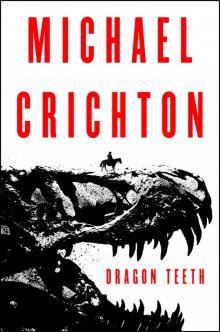 Dragon Teeth
Dragon Teeth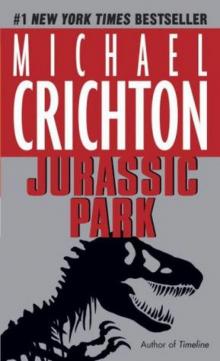 Jurassic Park
Jurassic Park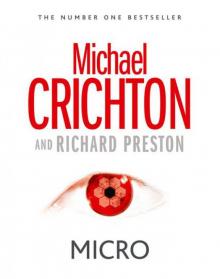 Micro
Micro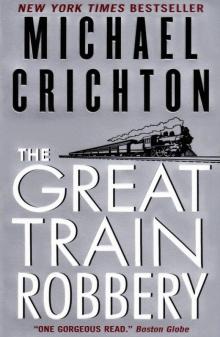 The Great Train Robbery
The Great Train Robbery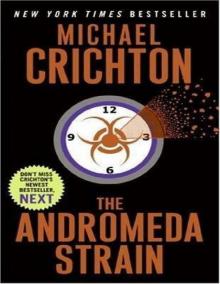 The Andromeda Strain
The Andromeda Strain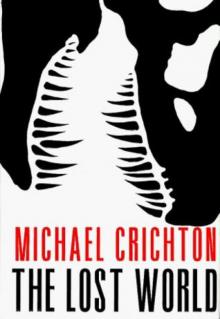 The Lost World
The Lost World Congo
Congo Travels
Travels Timeline
Timeline Sphere
Sphere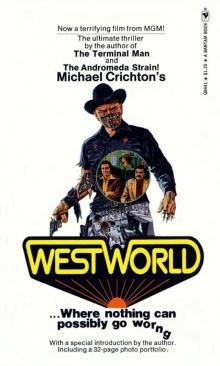 Westworld
Westworld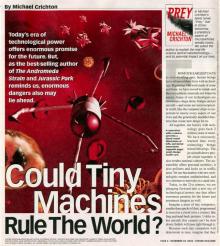 Prey
Prey State Of Fear
State Of Fear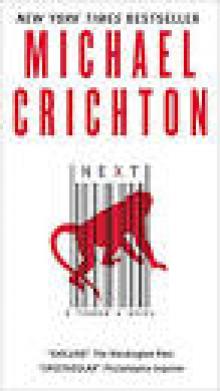 Next
Next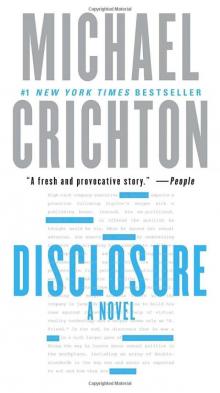 Disclosure
Disclosure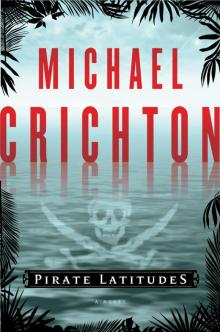 Pirate Latitudes
Pirate Latitudes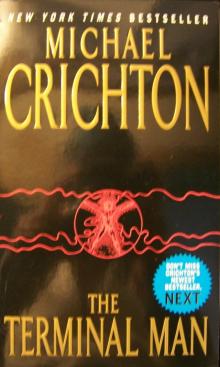 The Terminal Man
The Terminal Man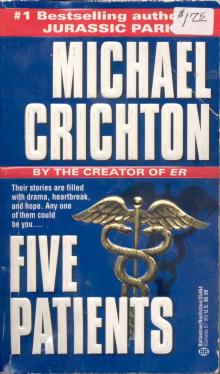 Five Patients
Five Patients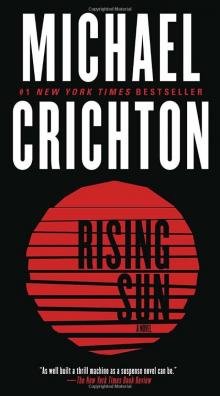 Rising Sun
Rising Sun Binary
Binary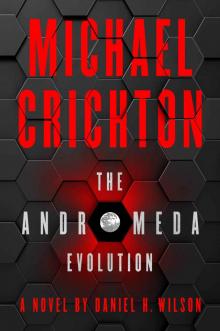 The Andromeda Evolution
The Andromeda Evolution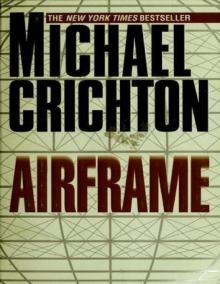 Airframe
Airframe Easy Go
Easy Go Drug of Choice
Drug of Choice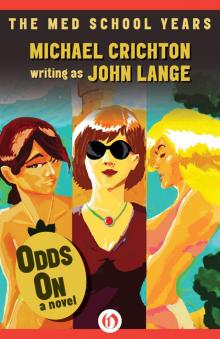 Odds On: A Novel
Odds On: A Novel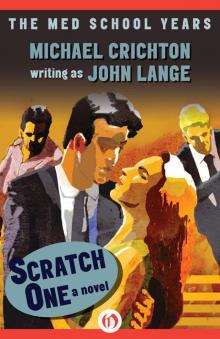 Scratch One
Scratch One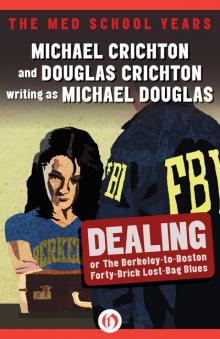 Dealing or The Berkeley-to-Boston Forty-Brick Lost-Bag Blues
Dealing or The Berkeley-to-Boston Forty-Brick Lost-Bag Blues Venom Business
Venom Business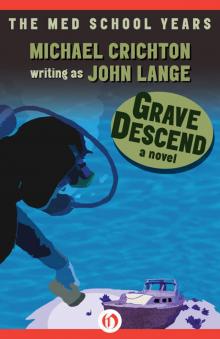 Grave Descend
Grave Descend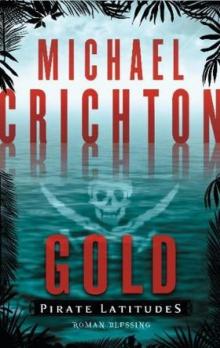 Gold - Pirate Latitudes
Gold - Pirate Latitudes Binary: A Novel
Binary: A Novel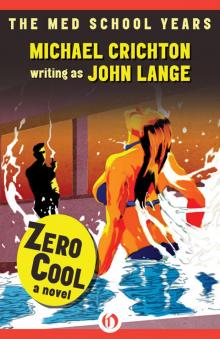 Zero Cool
Zero Cool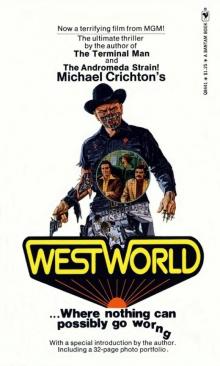 Delos 1 - Westworld
Delos 1 - Westworld